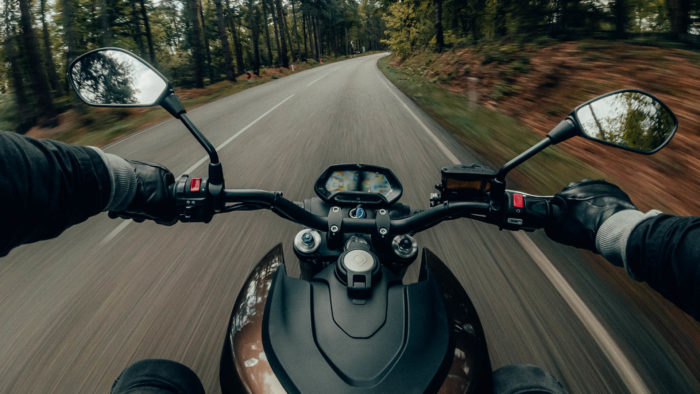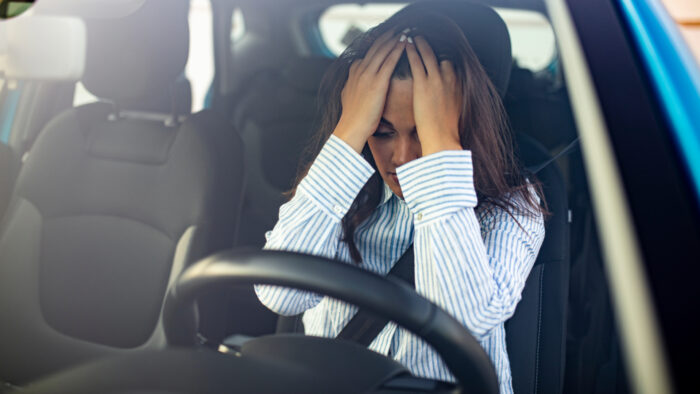Bicycling During COVID-19: Q&A’s On Bicycle-Car Accidents
Author(s): Deanna S. Gilbert
May 31, 2020

With some Ontarians hesitant to take the TTC during COVID-19, and with the City of Toronto expanding bicycle lanes, there will likely be more cyclists on the road than usual.
If you are a cyclist that has been injured by being struck or “doored” by a car and are considering whether to contact a personal injury lawyer, below are some frequently asked questions and answers that may be helpful.
1. What happens if the driver says that the accident was my fault?
Typically, the person advancing the lawsuit (the Plaintiff) bears the burden of proving fault in a civil lawsuit; however, a special reverse-onus applies in car accident cases where a motorist has struck a “pedestrian.” For purposes of this reverse onus provision, cyclists are considered to be “pedestrians.” This means that a driver of a car who hits a cyclist is presumed to be at fault, unless/until the driver can prove otherwise.
2. What happens if we are both to blame?
Unlike in criminal law, where an accused is either found guilty or not guilty, the concept of fault in civil law is not binary. Liability (fault) can be split between the driver and the cyclist. When the Plaintiff is determined to be partly at fault, that fault is referred to as “contributory negligence.” The specific liability split (e.g. 50-50, 60-40, etc.) is a matter to be determined either by way of a negotiated settlement or by the trier of fact (judge or jury) at a trial.
The percentage by which the Plaintiff is determined to be negligent is the same percentage by which the value of the Plaintiff’s case drops. For example, if the Plaintiff is 25% at-fault and the case is otherwise worth $100K, then the Plaintiff only receives $75K.
3. What if I was not wearing a helmet?
The failure to wear a helmet only becomes relevant if the driver can prove that the Plaintiff would not have been injured or as severely injured had a helmet been worn. For that reason, the failure to wear a helmet generally has no bearing on a case where a Plaintiff is alleging that an ankle or arm has been fractured. Conversely, the failure to wear a helmet is very relevant to a case where a brain injury is being alleged.
Just as the concept of contributory negligence applies to the cause of the accident, it also applies to the cause of the injury. Generally speaking, however, a Plaintiff is not usually held to be more than 25% at-fault for the failure to wear appropriate safety equipment.
4. What if it was not that the driver struck me, but rather I was “doored” by a passenger?
Under the Insurance Act, the owner of a car is “vicariously liable” (responsible by association) for the negligence of any “occupant” of the car, including an occupant who was getting into or out of the car. As such, while the driver or owner of the car may not have done anything negligent per se, the owner can still be found vicariously liable for an occupant’s negligence. This is important as it means that the company insuring the car on behalf of its owner will be required to respond to the Plaintiff’s personal injury lawsuit.
5. What if I am not insured?
When an injured cyclist starts a lawsuit against the driver or owner of a car, it is the company that insures the car that generally responds to the lawsuit; not the Plaintiff’s own insurance company. As such, you need not carry your own insurance in order to sue someone else.
In addition to suing, however, there is a further type of claim that injured cyclists can advance called an “accident benefits claim.” The full details of an accident benefits claim will not be described herein, but basically it is a no-fault system of compensation by way of insurance benefits (e.g. income replacement benefits, medical benefits, rehabilitative benefits, etc.). Typically, accident benefits claims are advanced against one’s own automobile insurance company even if the accident was caused by someone else; however, where a cyclist does not have insurance, then there are other insurers to whom the claim can be advanced (and may include the company that insured the involved car).
6. How do I know if my injuries are bad enough to make it worth my while to sue?
The truth is that there are special hurdles that apply specifically to car accident cases (as opposed to, for instance, slip & fall or medical malpractice cases). These hurdles do make it more difficult to advance some headings of “damages” (categories of compensation).
The first hurdle is called the “threshold,” which requires the Plaintiff to suffer a “permanent serious impairment of an important physical, mental, or psychological function and/or a permanent serious disfigurement.” The key words to note here are permanent and serious. The threshold applies to “general” damages (pain, suffering, and loss of enjoyment of life) and past/future healthcare expense claims (medical, rehabilitative, and attendant care needs). In other words, a cyclist who suffers a bad ankle sprain that results in weeks or months of pain but then otherwise resolves without issue is unlikely to pass the “threshold” and would be unable to recover general or healthcare damages. By comparison, a cyclist who suffers a severe brain injury is likely to pass the threshold.
The second hurdle is called the “statutory deductible,” which in some circumstances allows the insurer responding to the claim to deduct money that would have otherwise had to have been paid to the Plaintiff. The deductible applies only to the claim for general damages (it does not apply to healthcare expense claims or income loss claims) and only if the value of the Plaintiff’s general damages fall below a certain monetary level. Both that monetary level and the amount of the deductible increase each January. As of 2020, the monetary level at which the deductible gets triggered is $131,854.01 and the deductible is $39,556.53. The value of the Plaintiff’s general damages is a matter to be negotiated by way of a settlement agreement or determined at a trial. By way of illustration, if a Plaintiff’s general damages are determined to be worth $150,000.00, then the deductible does not get triggered and the Plaintiff will receive the full $150,000.00. Conversely, if the Plaintiff’s general damages are determined to be worth $50,000.00, then the deductible gets triggered and the Plaintiff would only receive $10,443.47.
If you are unsure about whether it may be worthwhile in your specific circumstances to start a lawsuit, you may best be served by consulting with a lawyer. Most personal injury law firms, including Thomson Rogers, will provide an initial complimentary consultation.
Stay safe.
Deanna Gilbert is a personal injury lawyer and a partner at Thomson Rogers. Her practice is devoted to representing Plaintiffs in personal injury litigation including cases arising from motor vehicle accidents, medical malpractice, slip and falls, product liability and assaults. Deanna can be reached at 416-868-3205 or by EMAIL.
Share this





